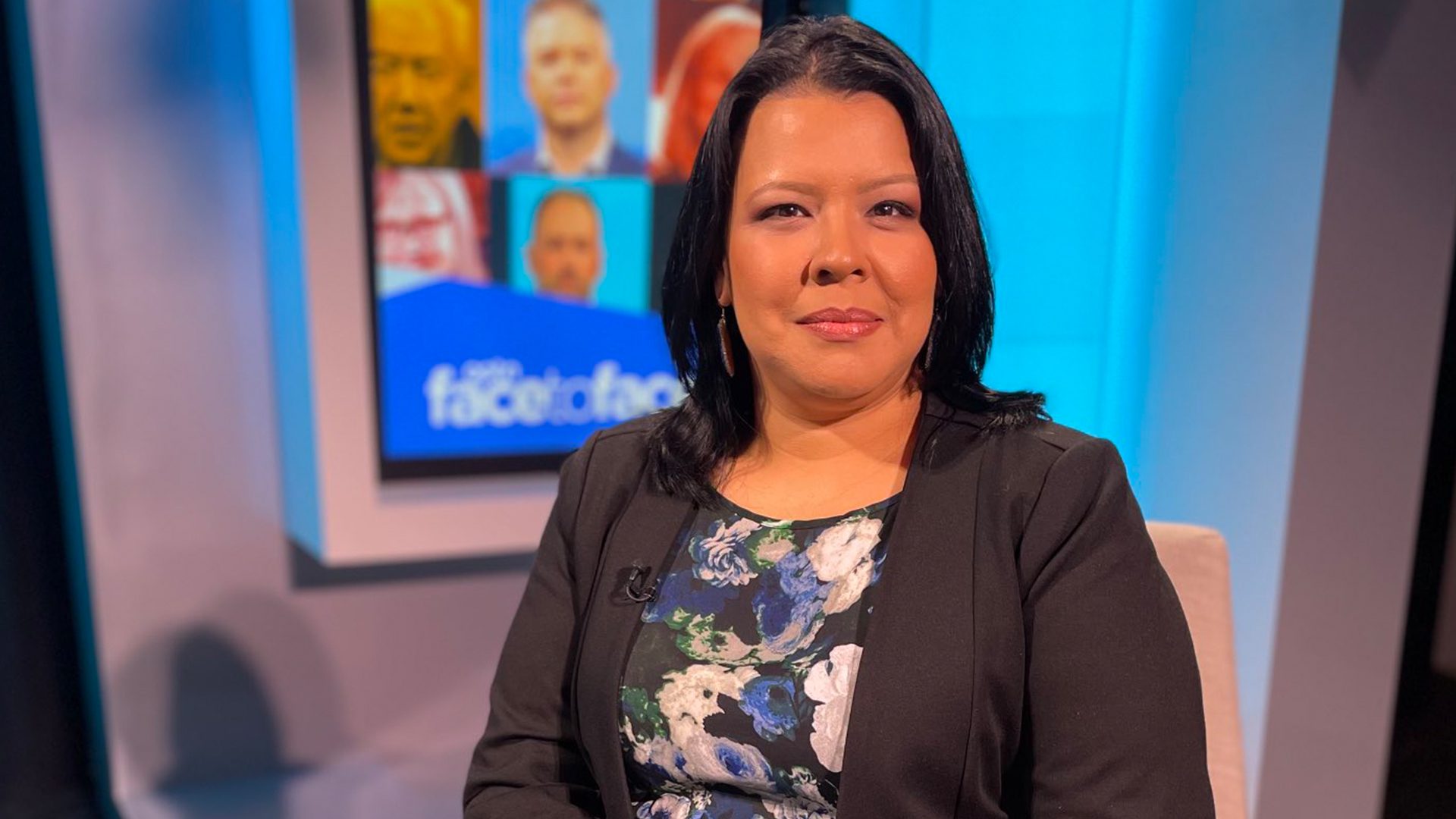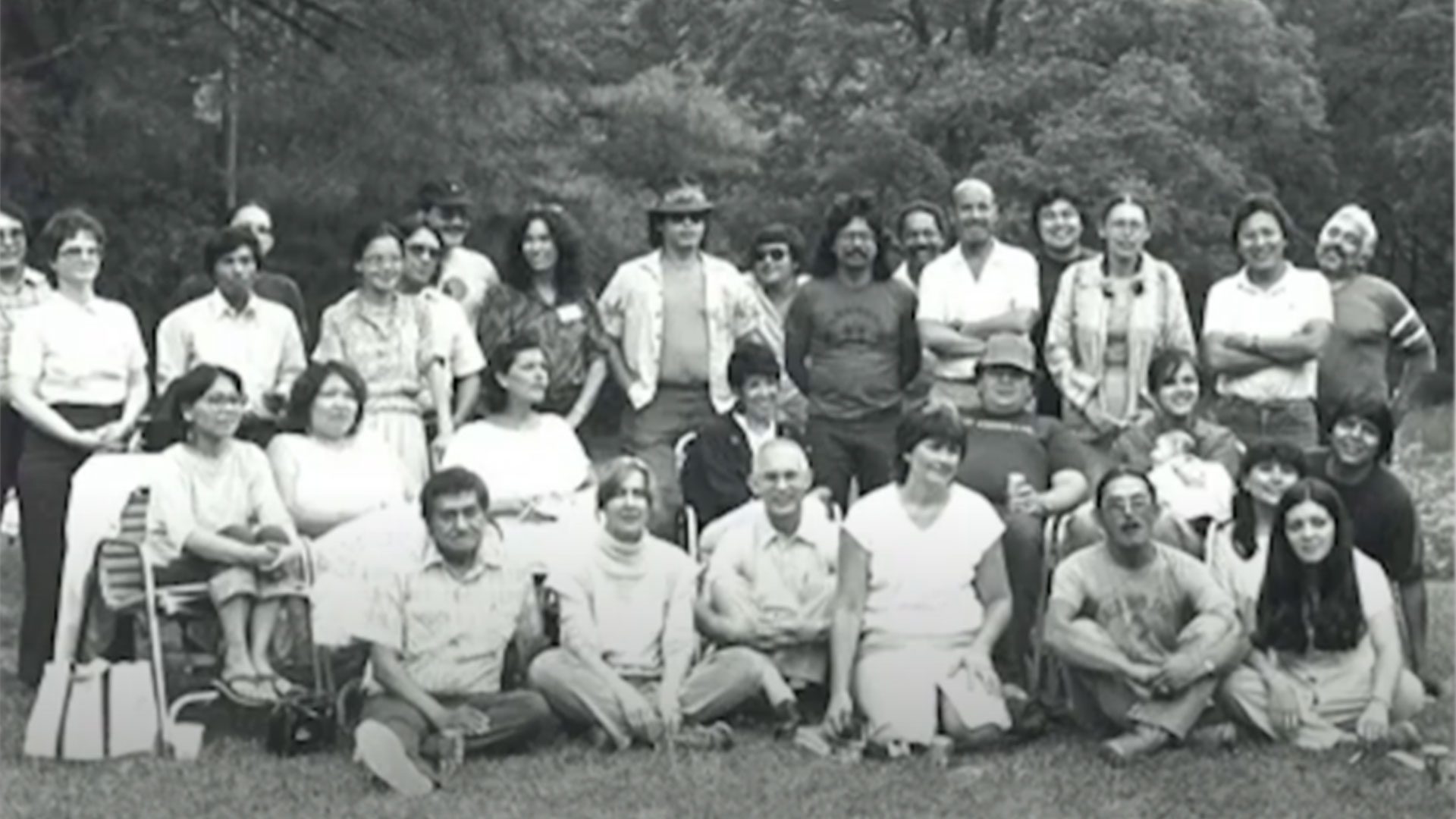
A new name would mean a new logo for the Native American Journalists Association (NAJA). Photo: APTN
The Native American Journalists Association (NAJA) is aiming to become more inclusive as its members vote on whether to rebrand as the Indigenous Journalists Association — a move inspired, in part, by evolving trends in cultural identity.
The group, with more than 950 members mostly in the United States, is expected to approve the change at its annual conference in Winnipeg, Man., this week.
Voting on the new name, as well as branding that would replace a feather with an “ija” logo in stylized letters, runs through Thursday.
The three-day conference begins Thursday and continues until Sunday at the Winnipeg Convention Centre.
“We have reconciliation in media, we have decolonizing journalism, we have wellness for journalists in newsrooms,” NAJA associate director Francine Compton told ICT (Indian Country Today) News.
“In our industry, we say, ‘There’s news you can use’; this is a conference you can use because there’s real teachings.”

Founded in 1983, NAJA wants to foster inclusion with Indigenous journalists there as well as in Alaska and Hawaii, since “Native American” is a modern alternative for “American Indian” — referring specifically to the millions of descendants of the original inhabitants of what is now the Lower 48 states.
The organization has grown from just a handful of reporters to a membership of nearly 1,000, which includes Indigenous journalists, funders, educators, and partners across the United States and Canada.
“Essentially, we’re going back to our roots and trying to create and provide support and resources for Indigenous journalists all across Turtle Island,” board member Jourdan Bennett-Begaye said, invoking the term some Indigenous people use to refer to the North American continent.
More broadly, the proposed change aligns with terminology used by the United Nations and many multinational organizations as the group also seeks allies among Indigenous journalists worldwide.
The Māori people in New Zealand, the Sámi people in Arctic Scandinavia and Russia, and the Mapuche people in Patagonia all face similar issues, with journalists who cover climate change, conflicts over land and resources and missing and murdered women, she said.
Compton, who is Anishinaabe from Sandy Bay First Nation northwest of Winnipeg, said NAJA was founded by Indigenous journalists from Canada and the U.S.

“In 1983, they came together from both sides of the Medicine Line,” she continued. “… Right from the very roots of this organization we have had people all across Turtle Island.”
The former executive producer at APTN News said this would be the second name change for the organization.
“The original name was Native American Press Association and it was changed to Native American Journalists Association to be more inclusive (of broadcast journalists).”
The change also would reflect an evolution in how Indigenous people see themselves.
They’re increasingly calling for “decolonizing” language, moving away from terms that were imposed on them, like “Indian” — a legacy of Christopher Columbus’ infamous cartographic blunder — and even, in some contexts, “American,” which derives from a mapmaker’s effort to honor another Italian explorer, Amerigo Vespucci.
Read more: NAJA to vote on name change
“It’s part of this larger movement that’s happening in Indigenous people, just reclaiming everything that’s theirs that should be theirs,” Bennett-Begaye said. “Since contact, decisions have been made for us and not by us.”
Still, some NAJA members have raised concerns that if the association globalizes, its focus on issues particular to Native Americans might be lost. Board members have proposed creating regional chapters if that happens.
“Indigenous is inoffensive, but it also doesn’t do any of the kind of distinct sovereignty work, distinct political work, distinct cultural affiliation ″ that other words do, said Elizabeth Ellis, a historian at Princeton University and an enrolled citizen of the Peoria Tribe of Indians of Oklahoma.
“It doesn’t tell you much beyond the fact that you’re existing in opposition to a history and ongoing legacy of colonization.”
Usage of the word “Indigenous” has soared in recent years, particularly after demonstrations against the Dakota Access Pipeline in 2016 forged the largest pan-Indigenous alliance in North American history. Standing Rock marked a before and after for Native American visibility in the media and popular culture, Ellis said.

But the proliferation of its usage doesn’t mean other terms should disappear, because they’re not always interchangeable, said Ellis.
Indian, American Indian, Native American, Native, and even “NDN” — a tongue-in-cheek slang popular in social media — each have distinct meanings and are appropriate in different contexts.
Indian, for example, is a historical reference used to connote barbarism to justify enslaving Indigenous people during the colonial era — settlers equated it to savagery while seizing more land and federal policies invoked it as a racist concept in the 19th century, Ellis said.
“Indian Law” remains embedded in the U.S. Constitution and in the official names of many Indigenous nations, so its usage in such contexts is inescapable.
“Indigenous” applies worldwide, including to anyone whose ancestors didn’t come from somewhere else, and whose communities have endured oppression of their people. But it doesn’t reflect the particular duality that many Native Americans experience as citizens of their tribal nations as well as the U.S., Ellis said.
Tribal affiliations
This is why many Native Americans, when communicating with wider audiences, identify themselves first by their tribal affiliations, and increasingly, in their Indigenous language. Ellis intentionally introduces herself as Peewaalia, just as Bennett-Begaye tells people she’s Diné, a member of the Navajo Nation.
Young people in particular are driving these changes in language, Bennett-Begaye said.
“A lot of older folks, and across Indian Country, they still call themselves Indian. My late grandmother, she still calls herself Indian,” she said. “But young people … they see that as derogatory.
“They’re like, ‘We don’t call ourselves that.’ And I think that’s the cool part, like, young people owning their identity.”
As editor of Indian Country Today, Bennett-Begaye oversaw that media organization’s recent name change to ICT, prompted by conversations about identity that were happening across the United States after the police killing of George Floyd in 2020.
For older generations, ICT can still mean Indian Country Today, while for younger folks, it can mean Indigenous Cultures Today, or Indigenous Communities Today, she said. “We really left it up to interpretation for our readers and our audience.”
-with files by Kathleen Martens










